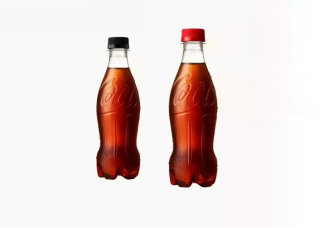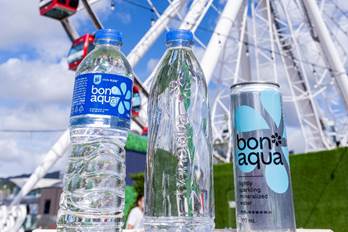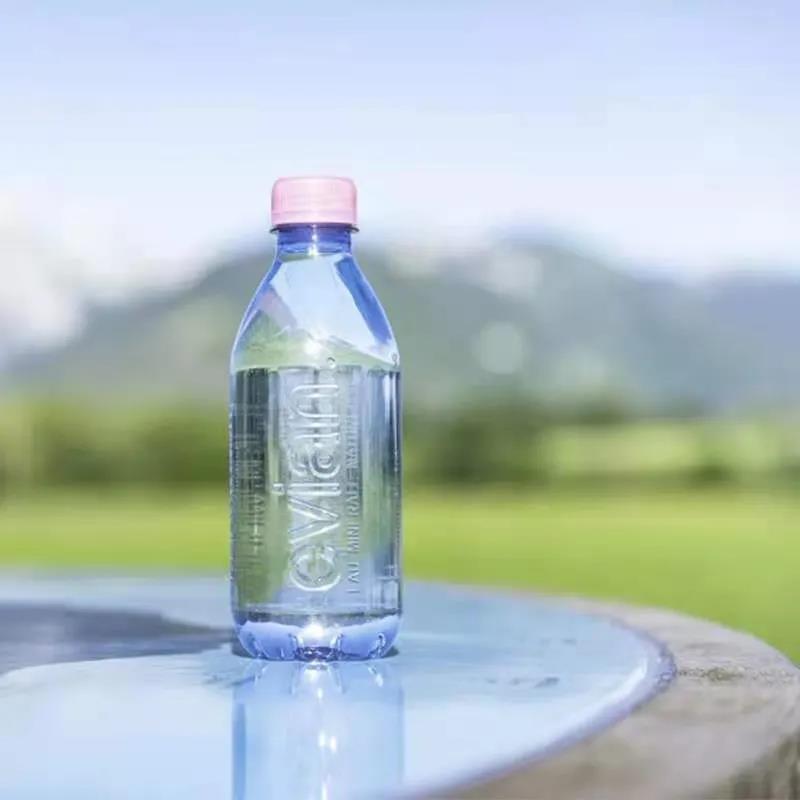What is label-free packaging? It means that the bottle body does not use plastic film or paper labels to print brand logos and product information. At present, there are processing technologies such as in-mold embossing to form relief, and there are also laser marking and other methods. The unlabeled bottles enter the recycling system without having to remove the labels, making bottle recycling more efficient. The unlabeled bottles enter the recycling system without having to remove the labels, making bottle recycling more efficient.
Recently, major bottled water brands have launched unlabeled PET bottles, aiming to further achieve the singleness of packaging materials and avoid the difficulty of recycling PET bottles due to the difference between label materials and bottle materials. Let's take a look at the creative packaging of unlabeled bottles launched by major brands. Let's take a look at the creative packaging of unlabeled bottles launched by major brands.
Coca-Cola launches unlabeled PET bottles again
This month, Coca-Cola launched its first unlabeled PET bottle called "Coca-Cola Contour Label Free" in South Korea. According to The Korea Herald, the largest English-language comprehensive newspaper in South Korea, Korean consumers are currently highly interested in and in demand for label-free products. Data shows that environmentally friendly label-free bottled water accounts for more than 14% of total supermarket bottled water sales. In order to distinguish between original and zero-flavor Coca-Cola, different bottle cap colors are used. Coca-Cola also specially designed the bottle body into a signature contour shape to help consumers easily recognize the Coca-Cola brand. This move is aimed at being consistent with South Korea's environmental protection requirements, adapting to the industry's label-free trend, and removing labels on plastic bottles to improve the recyclability of plastic bottles.

So far, Coca-Cola's soda brand Sea Gram's, bottled water brands PyeongchangSoo and Vio Soonsoo, and beverage brand Toreta have launched label-free packaging in South Korea. Jung-Hyun Kim, head of Coca-Cola Japan and South Korea, said: "We want to do more than just remove the label. We also want to combine convenience, innovation, environmental sustainability and branding to make our products unique. Coca-Cola has also changed consumers' preferences for unlabeled products. We are looking for ways to strengthen their preference for the Coca-Cola brand." Last year, Coca-Cola also launched a 100% unlabeled recycled bottle for its drinking water brand I LOHAS in the Japanese market.
100% rPET bottle for Bonaqua brand in Hong Kong, China
Recently, the unlabeled bottle launched by Bonaqua mineral water (Bonaqua) produced by Swire Coca-Cola Hong Kong in Hong Kong, China is made of 100% recyclable rPET plastic. The company said the new bottle was inspired by rivers. It is designed to provide higher recycling efficiency by simply eliminating label materials. In designing the packaging, the company also drew on the sustainable practices of Coca-Cola Japan.

Bonaqua will work with Baguio Waste Management & Recycling Ltd, a Hong Kong waste recycling company, and AIA Vitality Park, the Hong Kong Ferris Wheel, for long-term recycling operations. All PET bottles collected will be transported from Baguio to New Life Plastics Ltd, Hong Kong's first food-grade PET plastic recycling plant, which will begin operations in summer 2021. The beverage is currently sold on multiple online platforms.
Evian's first label-free rPET bottle
Danone's Evian mineral water brand has launched its first label-free, 100% recyclable rPET bottle in Singapore, which is 400 ml. The cap on the Evian bottle is made of a different material than the rPET used in the bottle. The cap is made of high-density polyethylene (HDPE) and oriented polypropylene (OPP), both of which are recyclable plastics.

In addition to the embossed Evian brand logo, the bottle also has basic product information, and the entire bottle is completely de-labeled. According to the person in charge of Evian, this 400 ml bottle took two years to develop. Shweta Harit, Vice President of Evian Global Brand, said: "This action positions Evian as a pioneer in sustainable design solutions and is a tangible demonstration of our commitment to become a circular brand by 2025. It is more important than ever for us to provide consumers with natural mineral water in a more sustainable way."
Suntory's label-free green tea packaging
Suntory has launched a limited edition label-free green tea packaging, with no stickers on the bottle packaging, only a small label on the bottle cap. This design also won the 2020 "JPDA Japan Packaging Design Competition" Grand Prize.

Although the beverage bottle without a label is a bit monotonous, it looks very transparent, and consumers can directly feel the freshness and cleanliness of the tea color. It is said that after Suntory launched this bottled green tea, sales increased by 50% compared with the same period.
How does the labelless bottle reflect the brand and information?
After the launch of the "unlabeled" bottled water, people's comments were mixed, and some people called it "creative", "environmentally friendly" and "easy to recycle". So, how does unlabeled bottled water reflect the brand and label information? How to sell it? Take Evian's unlabeled bottle as an example. Its brand LOGO and basic label information (such as capacity, etc.) are embossed into the bottle body in the mold of the plastic bottle. Since there is no product barcode on the bottle body, bottled water cannot be used in ordinary supermarkets, convenience stores and other retail channels, but it can be sold in a packaged manner, with product information and barcodes printed on the outer packaging. Evian mainly promotes channels such as hotels, restaurants, and reception occasions. Evian said that the new bottle is also suitable for e-commerce packaging that does not require barcode labels, which is also a sustainable solution.
Although this type of bottle is currently sold more in Japan and South Korea, with the advancement of global recycling measures and the introduction of more favorable policies, I believe that more countries and regions will promote this type of bottle in the near future.
 Current location:
Home >
News >
Industry News >
No label, the next new trend in packaging innovation? Coca-Cola, Feixue, Evian, and Suntory launch n
Current location:
Home >
News >
Industry News >
No label, the next new trend in packaging innovation? Coca-Cola, Feixue, Evian, and Suntory launch n
